Moving and mounting the Pearse Utility Plane
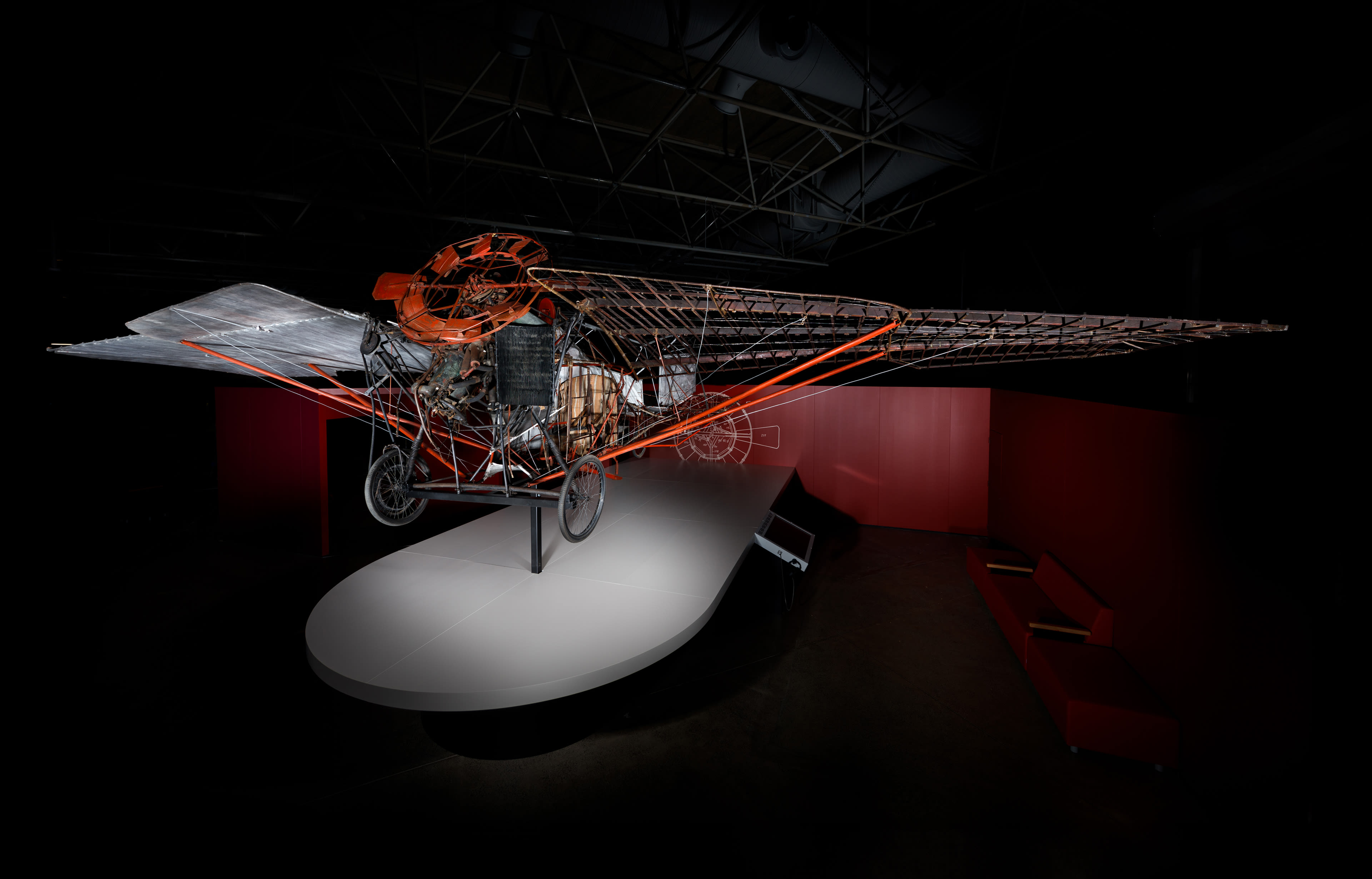
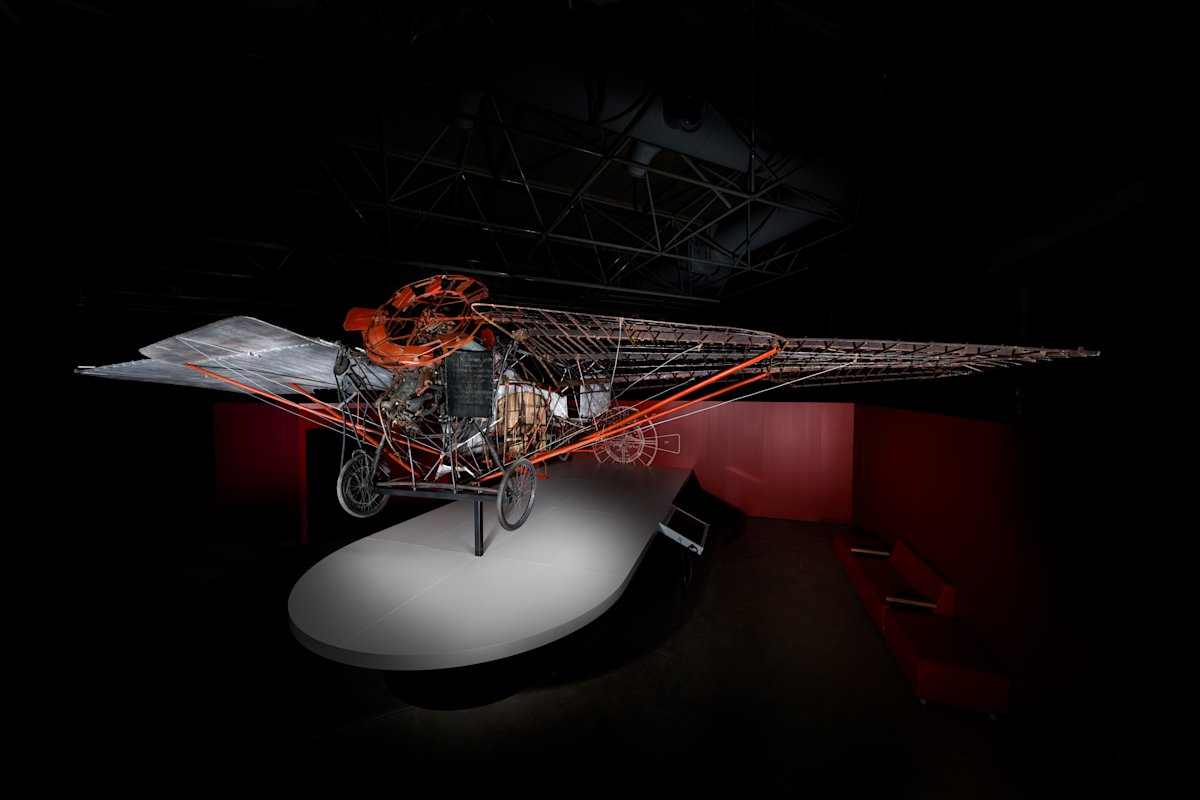
Moving and mounting MOTAT's iconic Richard Pearse Plane
Richard Pearse’s Utility Plane is one of the star collection objects visitors can see in MOTAT’s newly opened Te Puawānanga Science and Technology Centre. Moving and mounting the Utility Plane took months of planning, with measurements recorded, object weight and centre of gravity determined, as well as figuring out how it could be best displayed in a long-term, open display for our visitors to enjoy while keeping the aircraft safe.
You can read more about its significance and recent conservation work and the historical 1972 restoration by Air New Zealand engineering apprentices.
Behind the scenes preparation
Richard Pearse’s Utility Plane has been in MOTAT’s secure collection storage unit since it was removed from the Pioneers of Aviation display in 2013. It was confirmed for inclusion in Te Puawānanga, MOTAT’s new Science and Technology Centre, which resulted in a full condition assessment and conservation work. After these treatments were completed, planning started on the logistics to transport, photograph and mount the aircraft in the refurbished exhibition hall.
Initial design of the exhibition layout used the dimensions of the Utility Plane to consider its placement in Te Puawānanga using Computer Aided Design (CAD). This was followed with a visit from the Exhibition Designers and the Exhibition Project Team to view the aircraft, and understand its unique shape, weight and size, as well as the conservation requirements to ensure there was access to monitor and care for the aircraft to keep it safe and secure throughout the five-year long open display in Te Puawānanga. These requirements were considered alongside our visitor research analysis, to ensure the visitor experience of the Utility Plane is the best it can be.
A trial run
While in storage, the fuselage and wings were stored together but on separate trolleys. In preparation for Te Puawānanga, a conservation assessment was carried out, and two key areas of conservation treatments completed (wood and metal frame stabilisation and textile conservation). While this work was taking place, it became clear we needed to do a trial run of reattaching the wings to the fuselage so we could understand which parts secured where, and how many people would be needed for the install. The trial run involved a team of 12 people who lifted and fastened each wing onto the fuselage. From this work, the team members could understand the footprint of the aircraft, note the wing fixing points, understand how and where the wings attached to the fuselage. It was also chance to run through the whole procedure.
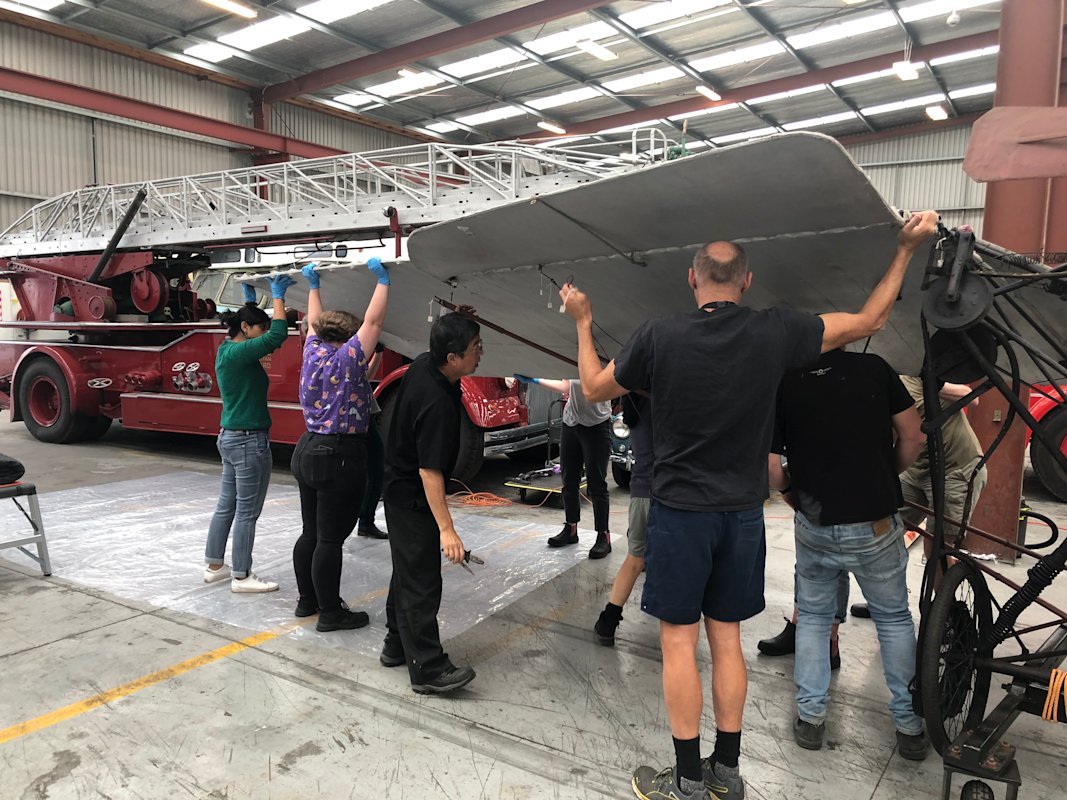
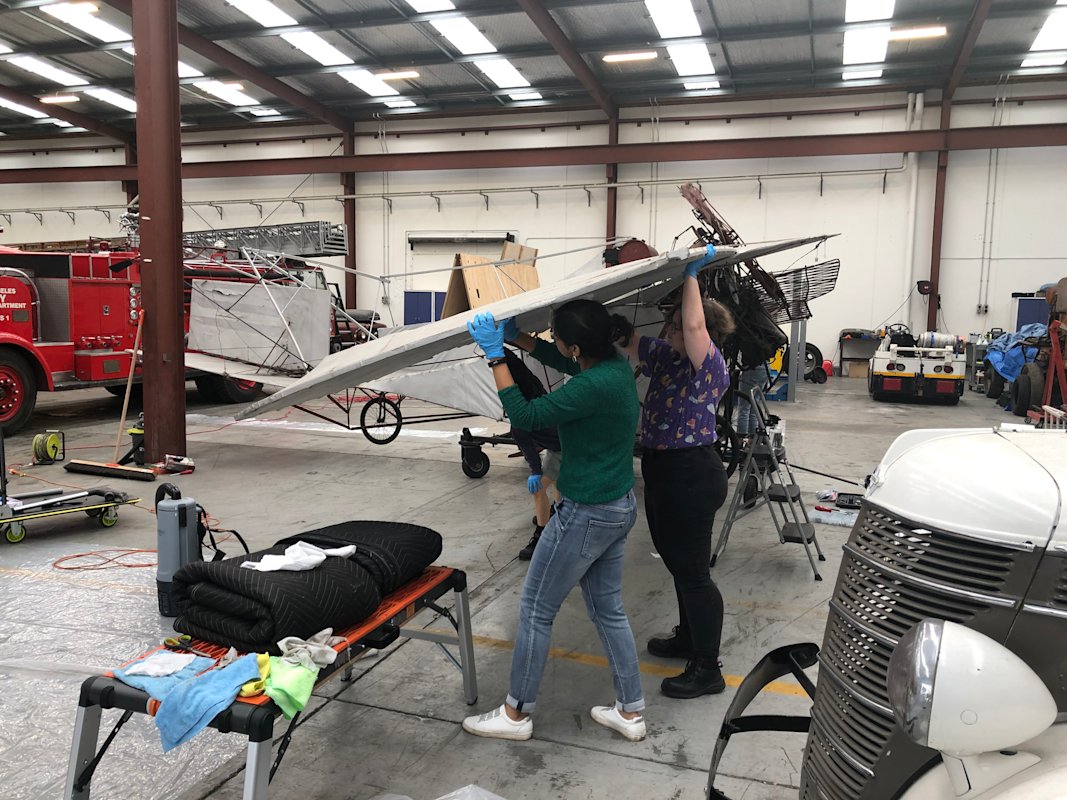
The trial run to attach the wings to the fuselage, March 2023
After the trial run, the wings were taken off again, and the conservation work continued, however, the trial run identified one broken and one cracked wing strut. The struts are required to support the wings and a concern was raised about the safety of the aircraft while on display if the original struts were used. A decision was taken to substitute the original struts with wooden replacements for the duration of the five-year display period. The new struts (as well as additional metal wires that replaced the original wires) follow the form, material and colour of the originals to ensure visual continuity. The work to attach the replacements was accomplished inhouse by MOTAT's senior engineer. The original struts have been retained in storage.
Transportation across Auckland
The Richard Pearse Plane is transported to its new home.
The Utility Plane weighs about 500kg and had been stored with its wings removed from the fuselage. The wings were stored on a specially designed A-frame trolley, known as the ‘wing trolley', and the fuselage had been stored on a moveable ‘aircraft trolley’. These trolleys enabled the object to be stored off the ground and be easily mobile. In preparation for transport, the aircraft was wrapped in Tyvek and polyethylene sheets – leaving the trolley wheels and handles free for maneuvering. This wrapping would protect the recent conservation work and added another protective layer against the elements when transferring the aircraft into its new exhibition space.
MOTAT’s collection storage facility is located 20km away from our main public sites, and there is controlled vehicle access inside MOTAT Great North Road site, which is home to Te Puawānanga. This meant good communication, logistics and clear timeframes were needed for the transport of the aircraft to run smoothly. Leading the transport logistics was MOTAT’s Registry team, who organised a fully-covered curtain-side truck with a flat deck. The curtain-side truck was needed due to the height and large, bulky size of the aircraft and the storage trolleys. Logistics to move the aircraft onto and off the truck required a forklift and this manoeuver would not be possible with a tail-lift truck.
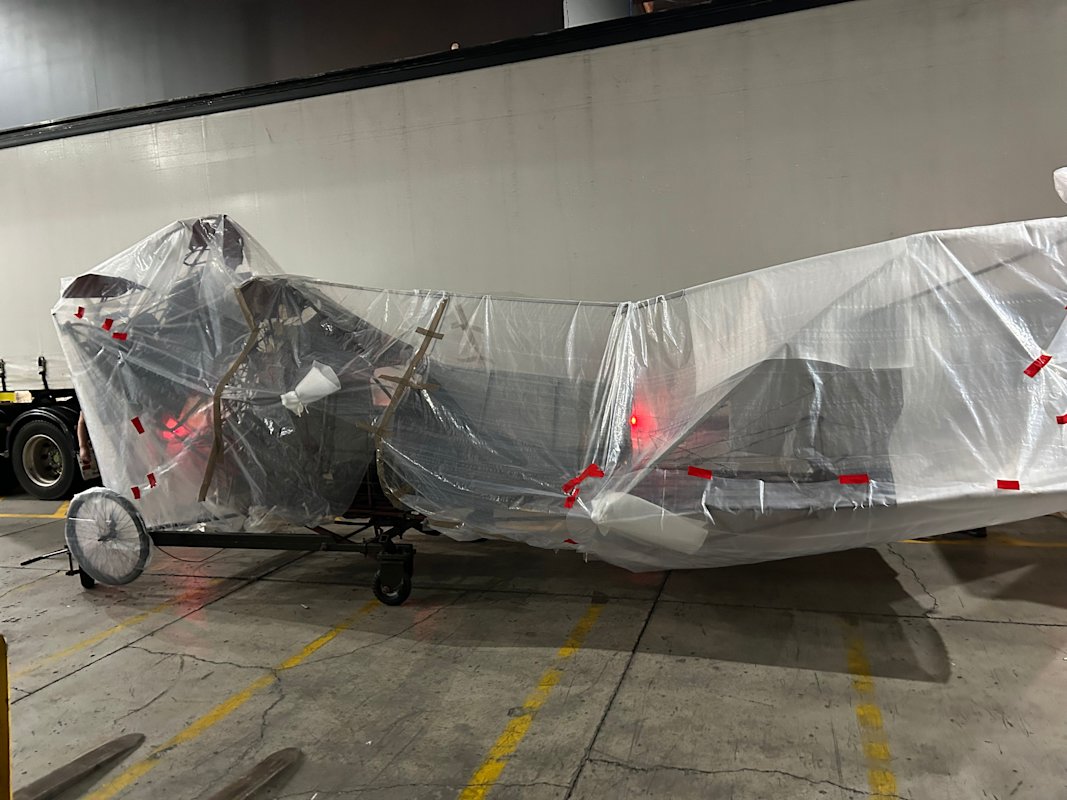
Wrapped for delivery – the Pearse Utility plane is being prepared for transport.
The curtain-side truck was booked with two transport runs required – one for the fuselage and the other for the wings. The date of the move was determined several months in advance, which ensured the right type of truck was available, and site access at MOTAT Great North Road was reserved for the deliveries. Forklifts and fork extensions were required for loading the aircraft onto the truck, and for delivering it to the exhibition area.
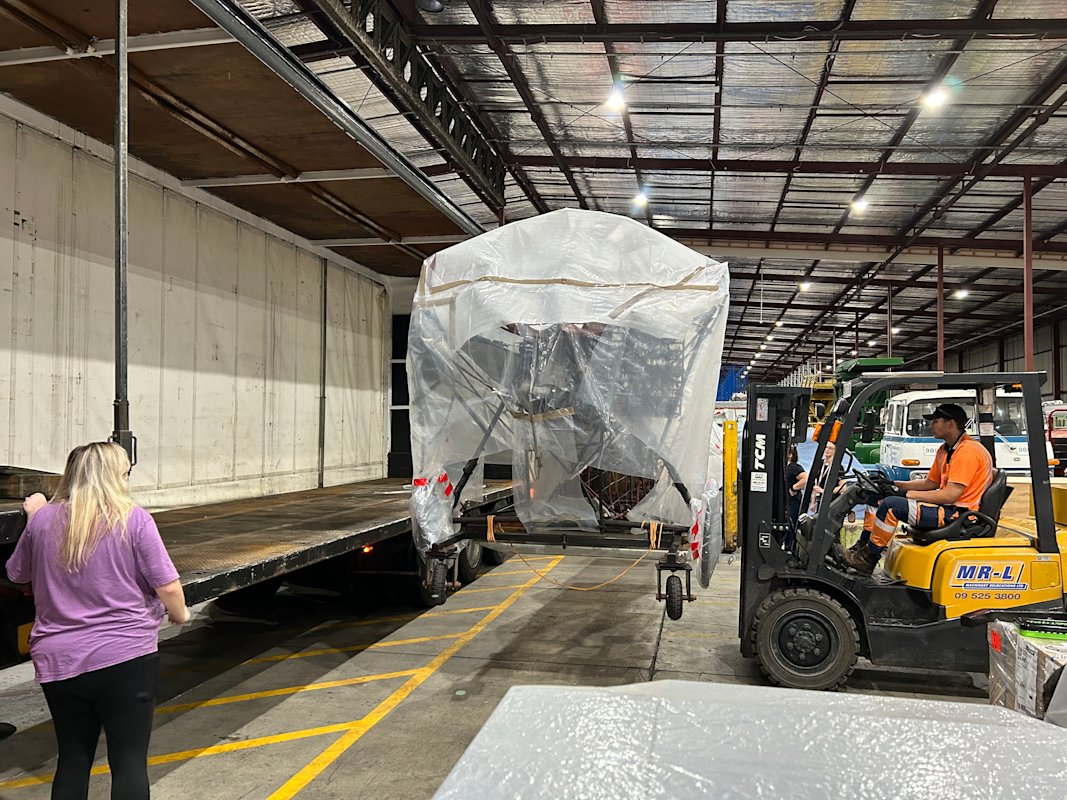
Loading the fuselage on the aircraft trolley at storage.
The fuselage on the aircraft trolley was delivered first and offloaded using a forklift with extensions. The forklift was then used to place the fuselage into the exhibition space. The truck then returned to the storage unit for wing loading and transport. These were transported across town and offloaded using the same process as the fuselage. Once inside the exhibition hall, both the aircraft and wing trolleys were pushed further inside before a forklift was again used to shift the aircraft and wing trolleys into position for reassembling the aircraft.
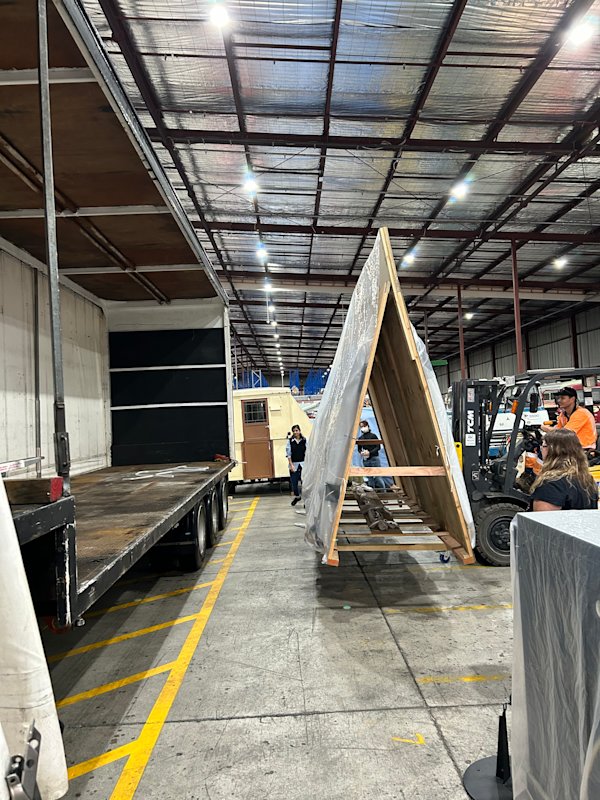
Loading the wings on the wing trolley.
The successful movement of the aircraft was supported by MOTAT team members who were onsite to supervise and assist with each stage: transporting, site vehicle movements, loading, off-loading and placing the aircraft safely into the exhibition hall in preparation for the next steps of mounting.
A feature within Te Puawānanga is the elevated display of the Pearse Utility Plane on a 2 metre high, single vertical column. This elevation involved several steps which took place over three days. First, the aircraft was reassembled, secured to a temporary support beam, and then lifted by the forklift, which then held the aircraft while the fuselage trolley was disassembled and removed. The next step was to shift the aircraft from the support beam and onto its new display column. To do this, the support beam and aircraft were lifted by forklifts with extensions to a 2.5 metre height. This allowed enough working space below the aircraft to install a two-meter high vertical display column, then anchor bolts were used to secure the bottom plate to the floor. The following day, the support beam holding the aircraft was lowered and inserted into the column. The last step was to secure the beam and column together with a bolt and nut to the floor.

The aircraft in the exhibition space on its supporting beam. Exhibition technician Ricco Young is securing the column to the floor with bolts.
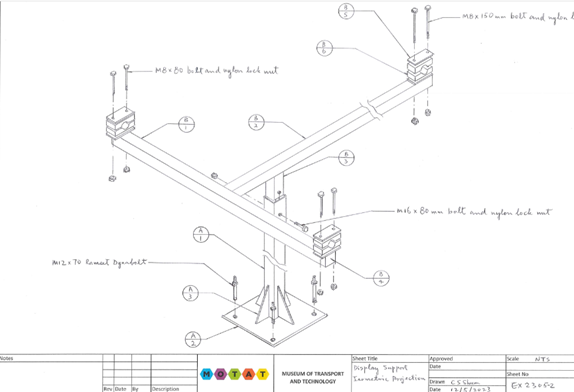
Technical drawing of column and mount by CS Shum, Senior Engineer – Infrastructure & Heavy Engineering.
One of the last tasks was photographing the aircraft in the display. This involved a photographer using a ladder platform for the camera which is operated by a remote control. The ladder platform puts the camera on level with the aircraft while ensuring the safety of the photographer. The photographs were processed and used for various purposes, including on MOTAT’s Collections Online.
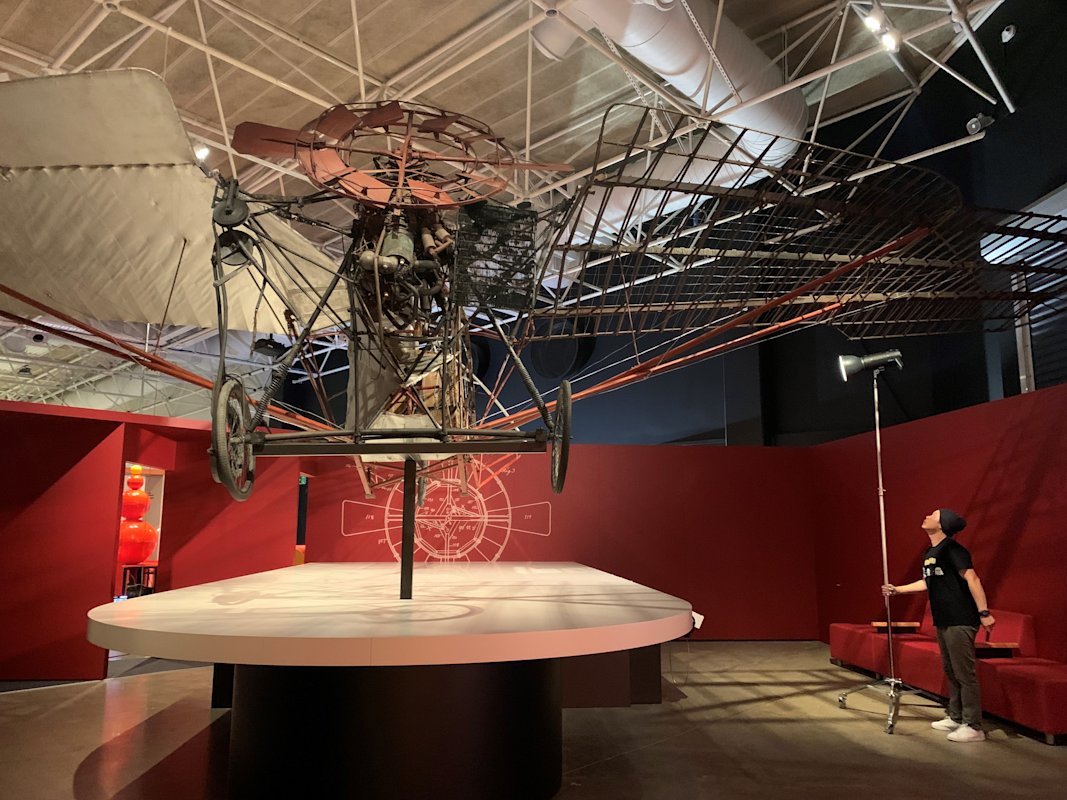
Photographing the Utility Plane in Te Puawānanga.
Pearse’s Utility Plane is installed!
Engineering, math, design and access are all factors which have been considered in the planning, mounting, installation and photography of Pearse’s Utility Plane in Te Puawānanga. We hope the inventiveness of Richard Pearse is echoed in this showcase and will continue to inspire future generations to dream, create and innovate.
Te Puawānanga Science and Technology Centre is open daily at MOTAT Great North Road, Western Springs, Auckland.
Authors: Belinda Nevin, Robyn Entwistle and CS Shum.
Editors: Chelsea Renshaw, Karin Konold.
Thanks to: Conservation, Registry, Collection Workshops, Exhibitions.
Published in July, 2024.